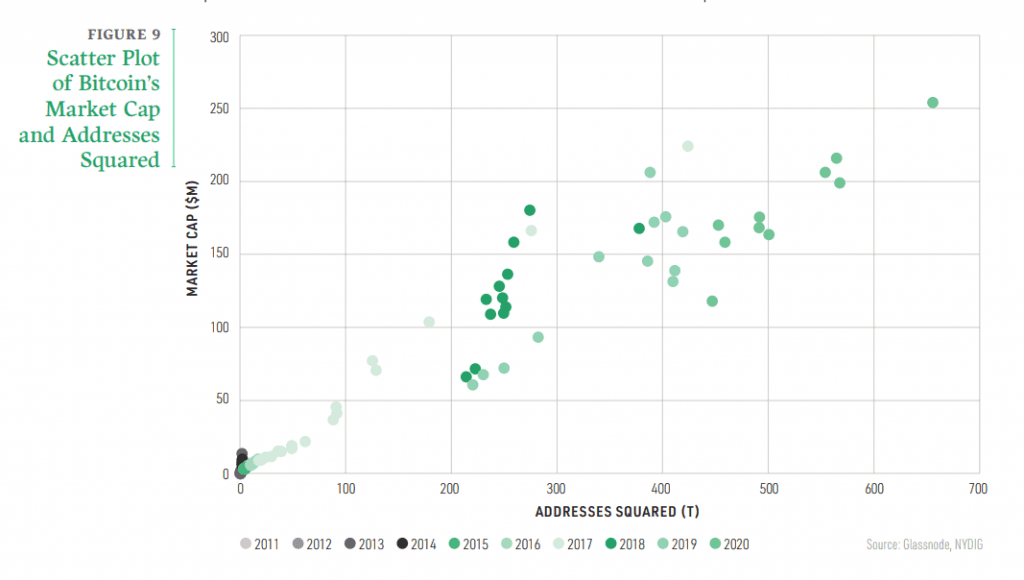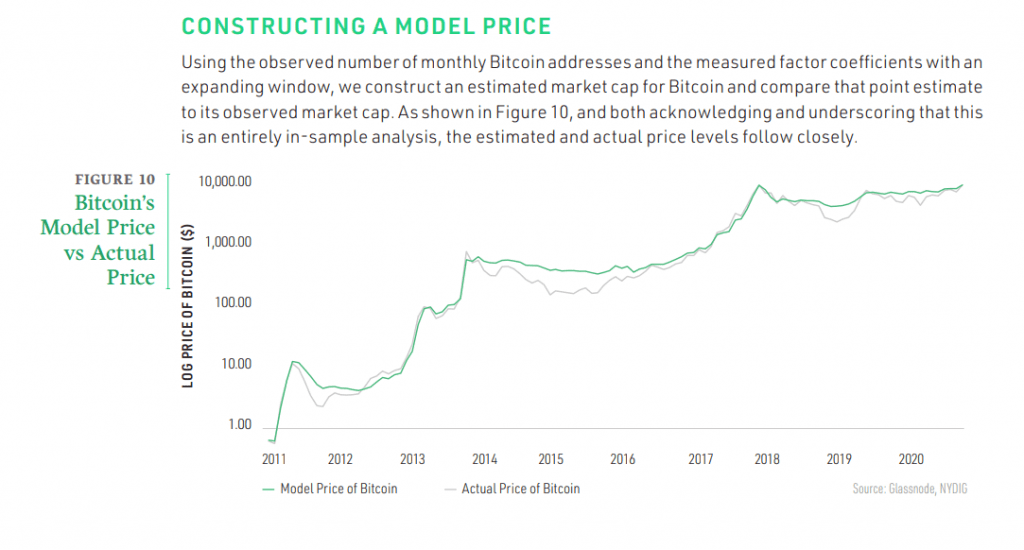
Key Ethereum Takeaways:
- Raoul Pal tweeted a comparison of Ethereum 2021 chart to Bitcoin’s 2017 chart, according to Metcalfe’s law.
- What is Metcalfe’s law?
- How is it applicable for cryptocurrencies?
- Ethereum’s growing number of adresses has reached over 62.6 million.
YEREVAN (CoinChapter.com) – Raoul Pal, the co-founder of the financial media company Real Vision and Global Macro hedge fund manager, shared an observation on his Twitter page, that stirred a lot of discussion among his followers. He posted a graph of Ethereum’s current price progression, in relation to Bitcoin’s 2017 chart. The executive went on to call the similarities “spooky” and commented that “perspective is useful for everyone”.
The discussion over the presented graph was extensive and the executive added more of his findings into the fold. He also pointed out how Solana 2021 exhibits a price action similar to Ethereum in 2017.
These are all priced according to Metcalfe’s Law hence why they are so similar to previous periods. The super high correlation is just spooky, however… but a useful framework.
commented Mr. Pal.
However, the merit of applying Metcalfe’s law to cryptocurrencies like Bitcoin and Ethereum in itself constitutes an issue for some researchers. So what does the law entail and is it applicable to cryptocurrencies?
Also read: Bitcoin price drops $4K as China’s Central Bank hardens crackdown
Metcalfe’s Law
The law is named after Robert Metcalfe, the creator of Ethernet, but was originally formulated back in the 1980s. The law refers to evaluating telecommunications systems. It claims that the value of a communications network is proportional to the number of its users squared (n² ).
In plain English, it works as follows: when the number of participants in any network grows, so does the number of individual connections those participants (nodes) can form (n(n-1)/2) and the value growth follows. For example, two nodes form only one connection, making each of those nodes relatively low in utility. However, twelve nodes will form 66 connections, thus the network itself will grow in value, through the ascending utility of each individual node.
But there’s a catch. The empirical evidence of Metcalfe’s law is hard to collect, and thus data validation is weak. In addition, the law is popular in computer science, but rather unexplored in economics. However, blockchain technology intertwined tech and economics together, making the research that much interesting.
Also read: Bitcoin comes to Twitter: Social media giant launches BTC tipping feature
Is the law applicable to cryptocurrencies?
Again, in theory, if a blockchain has individual nodes as part of an interconnected network, why wouldn’t the law work for the cryptocurrency domain?
Moreover, the financial giant Goldman Sachs did research on the matter. Analysts Zach Pandl and Isabella Rosenberg conducted a study to determine whether Bitcoin was undervalued according to the law. The number of nodes in the crypto networks is growing fast, and the research showed that the market price hasn’t caught up yet.
New York Digital Investment Group (NYDIG; a financial services firm dedicated to Bitcoin), also investigated the application of Metcalfe’s law to Bitcoin back in November 2020. However, the results can be extrapolated to other blockchains with a supply cap.
The report provided the graph representation of the market cap growth in proportion to the number of users squared.

The researchers then compared the approximated value of Bitcoin according to Metcalfe’s law, to the actual price action. The results below speak for themselves.

Also read: Ethereum could drop to $2.2K, claims trader as ETH forms classic bearish setup
What about Ethereum?
Fast-forwarding back to Ethereum, the number of non-zero addresses (nodes in the network) is at its all-time high of 62.6 million. According to the communications law, the rising number could lead to an increase in price.
Surely, Metcalfe’s law does not include minor setbacks and all the ups and downs of the day-to-day price action. Moreover, there are so many external factors that the law doesn’t deal with, such as legal disputes. But according to the law, on the macro-scale of things, Ethereum is undervalued.
Raoul Pal agrees, citing the necessity to see the big picture instead of focusing on the factors that skew the daily price action in either direction, ending his Twitter thread with an optimistic “We All Gonna Make It”.
Also read: Crypto.com and FTX sign new sports sponsorship deals while the FTT token declines


